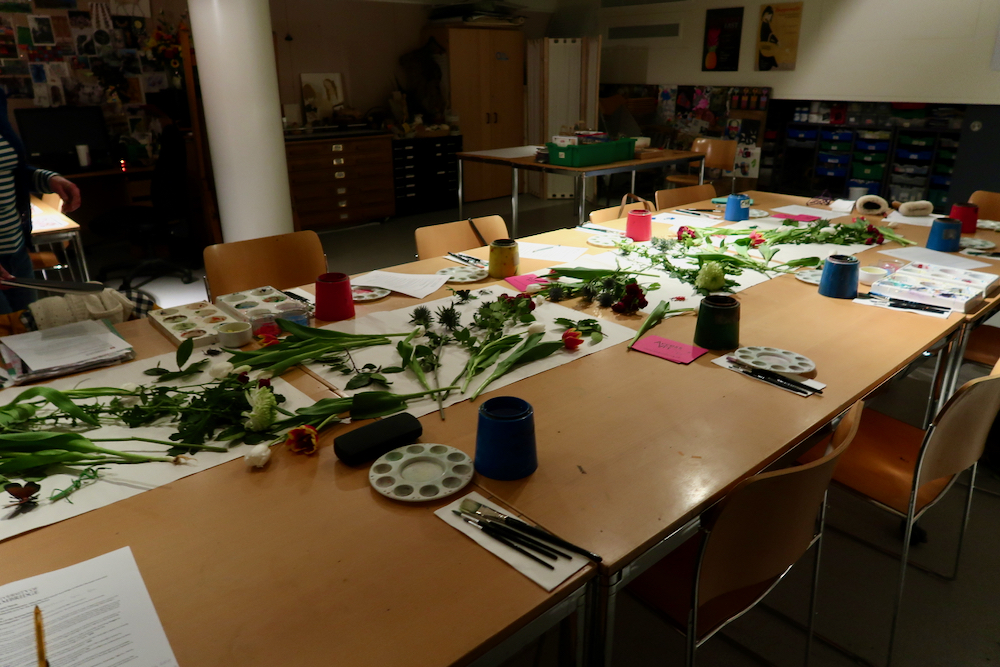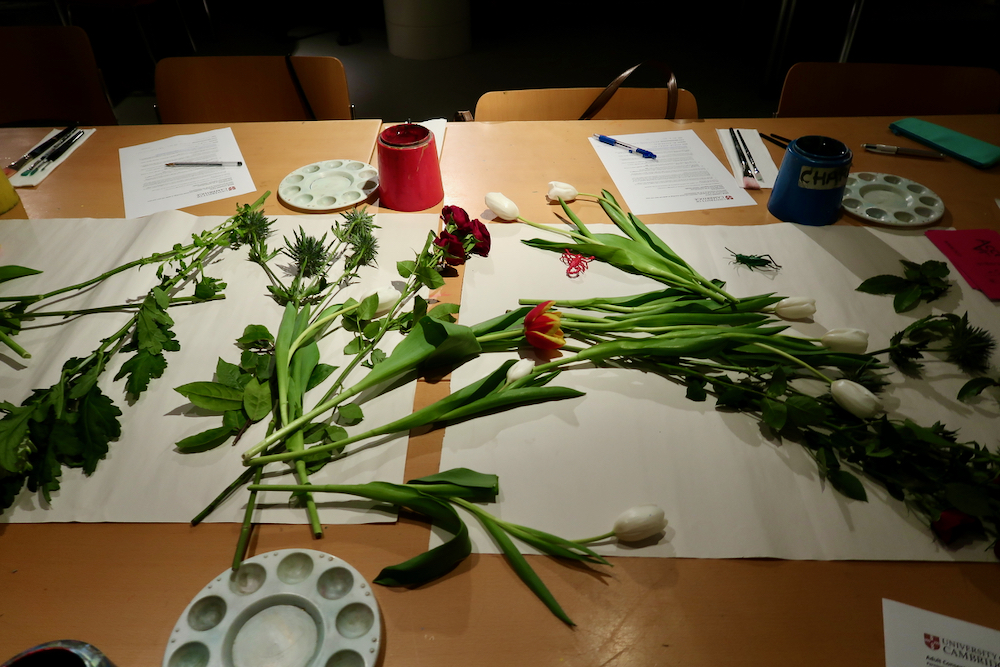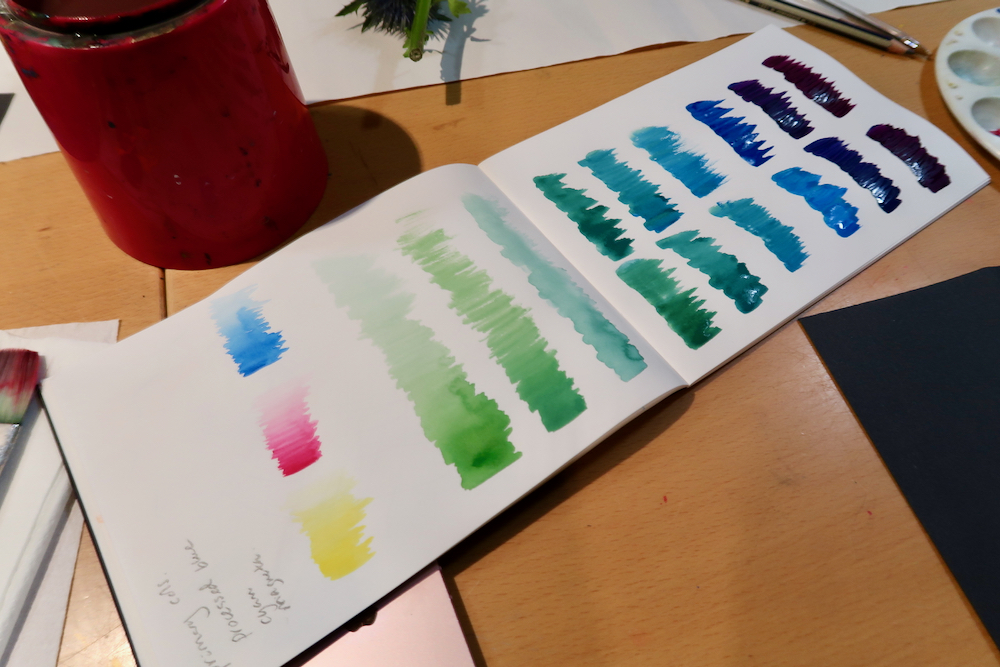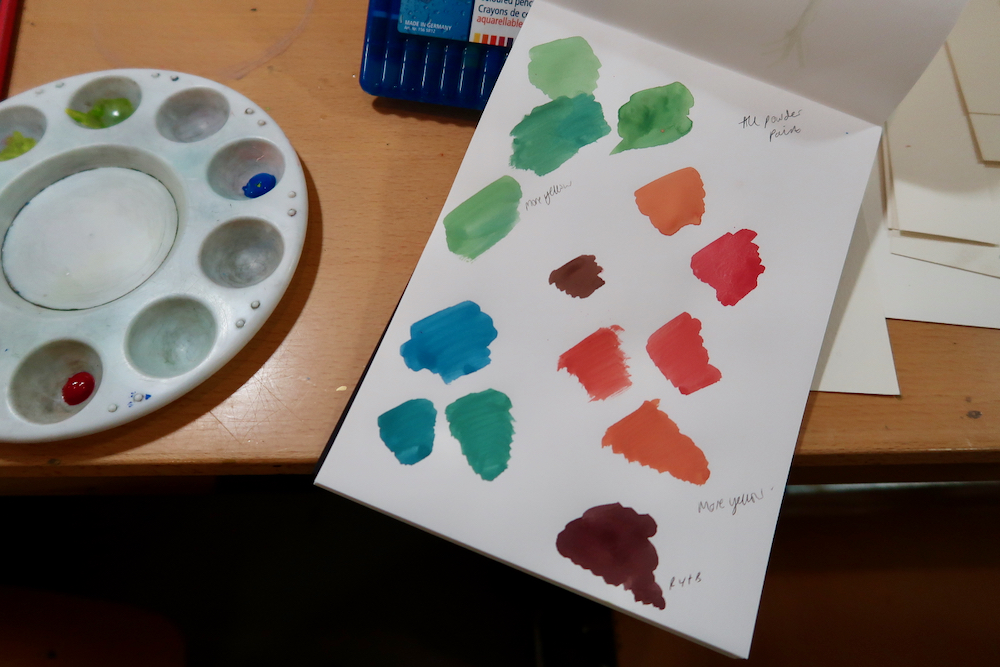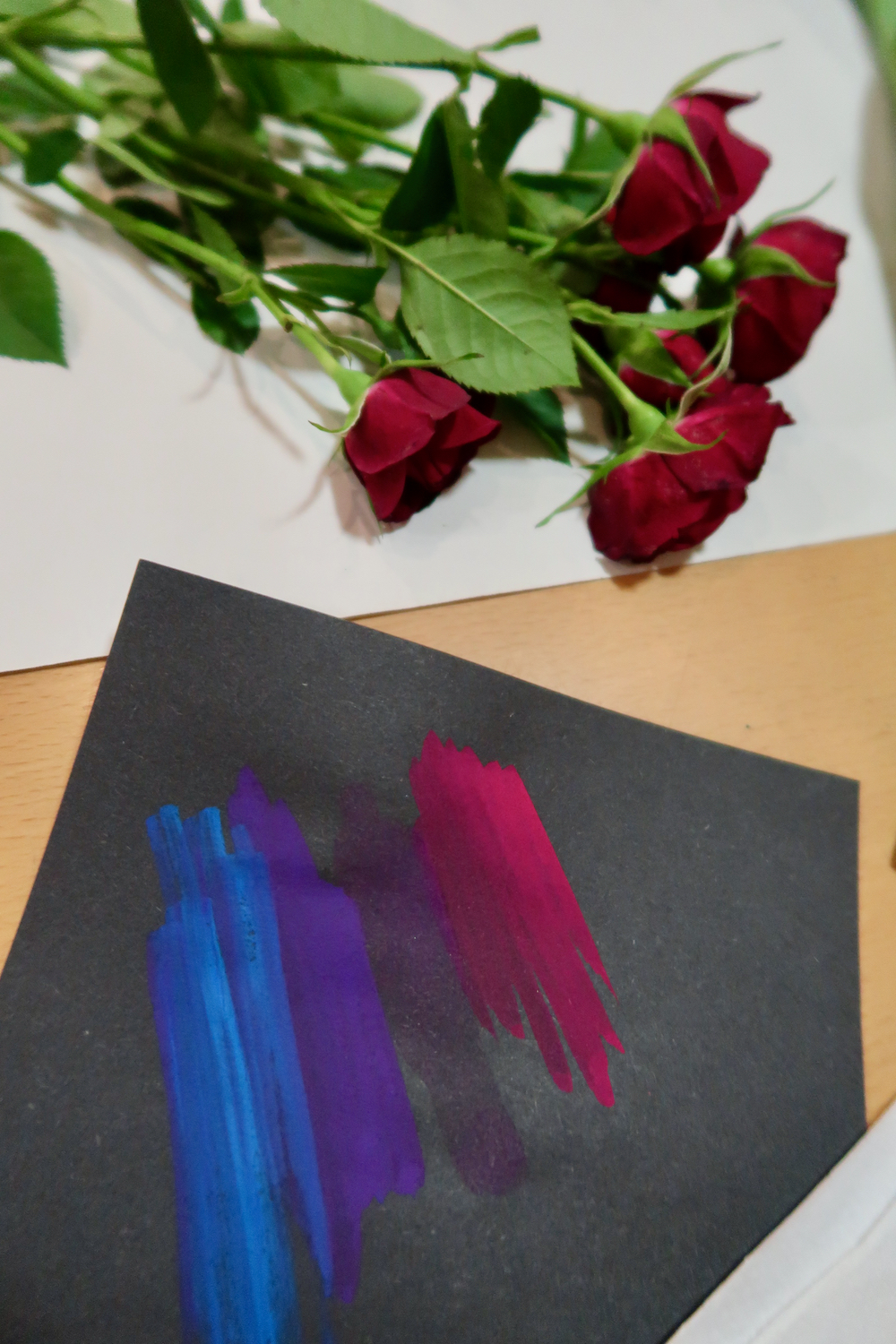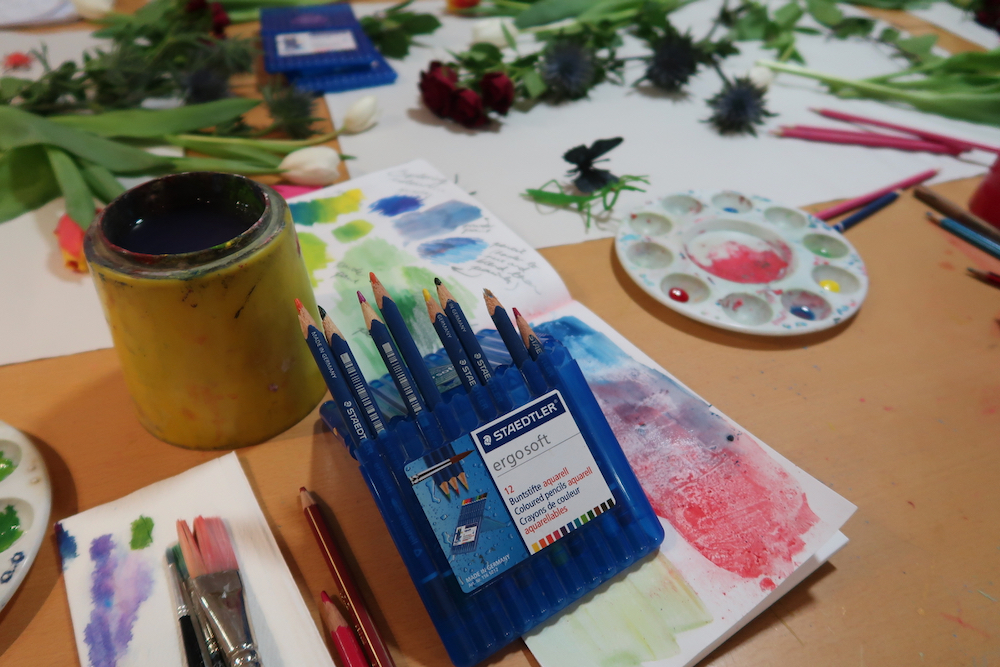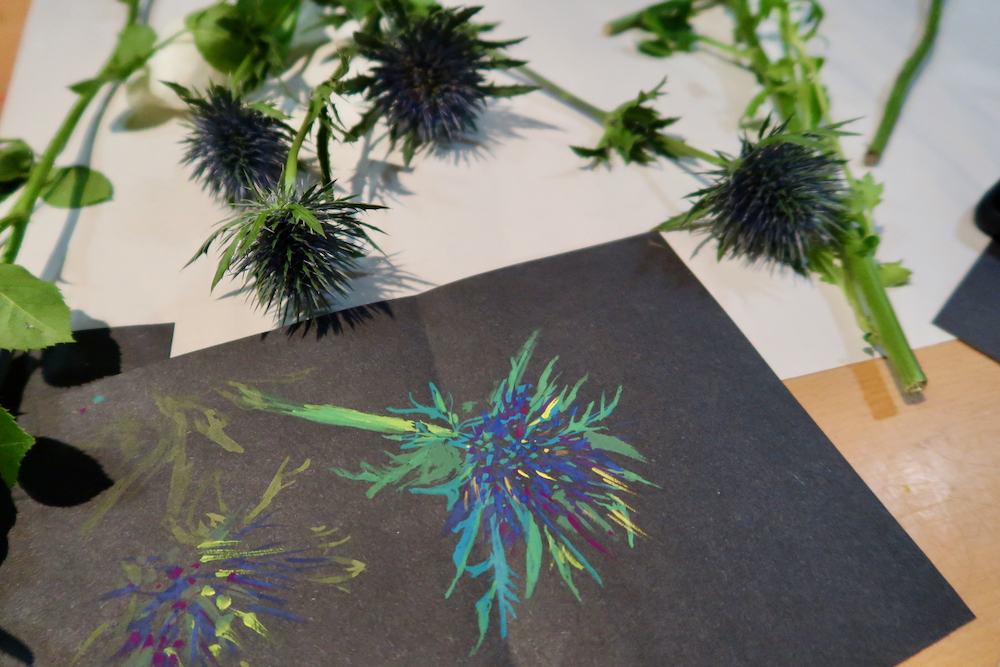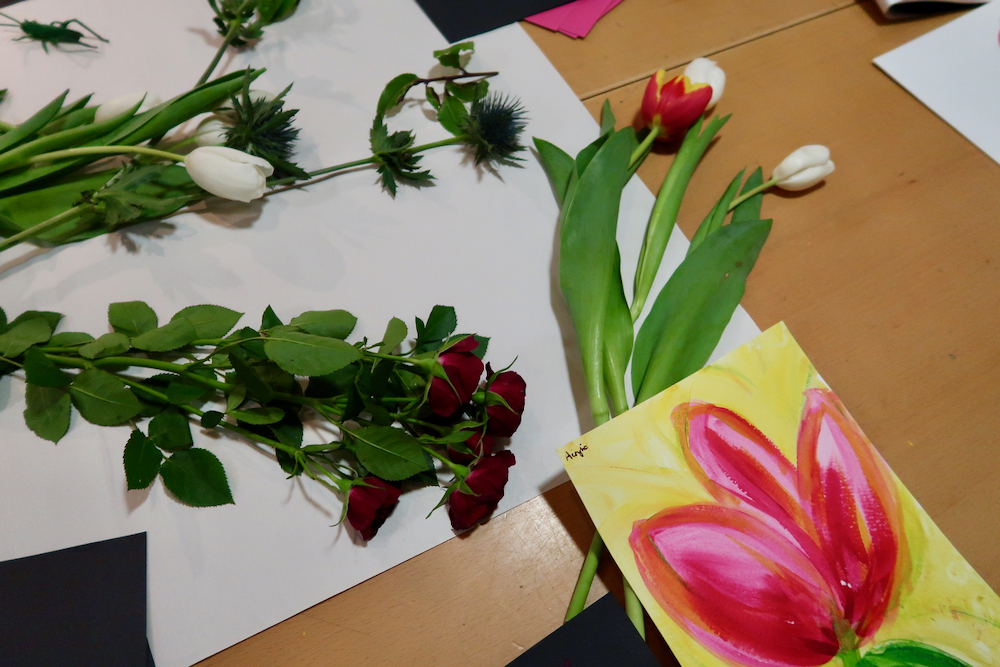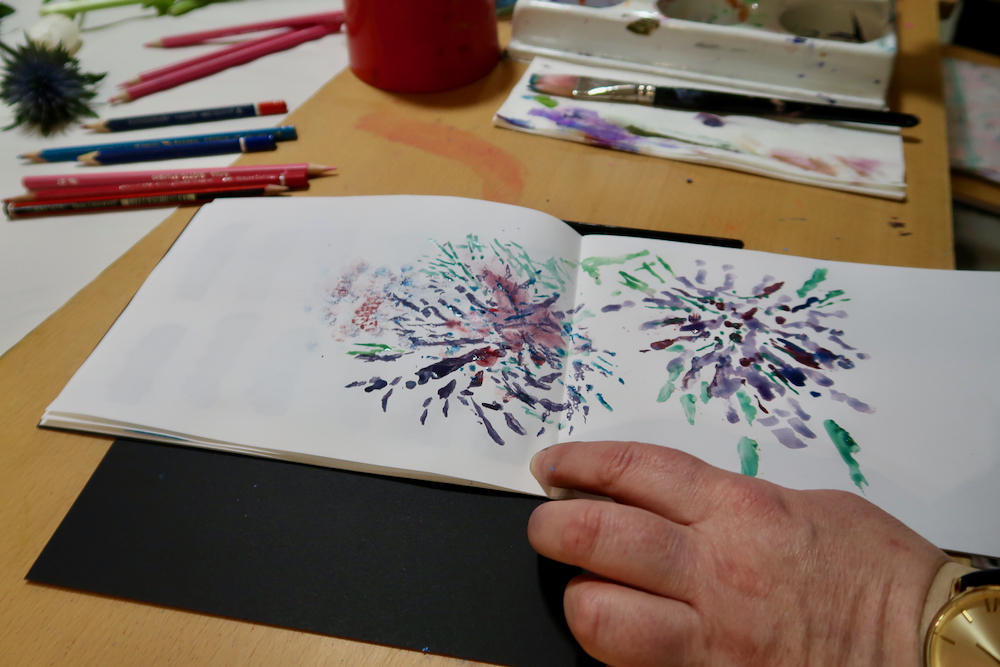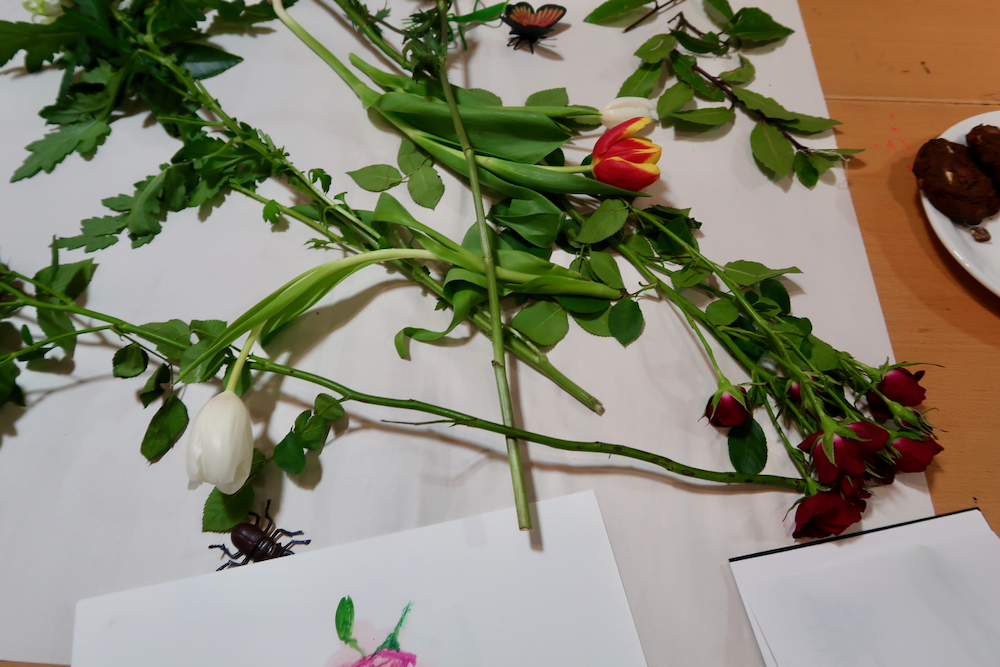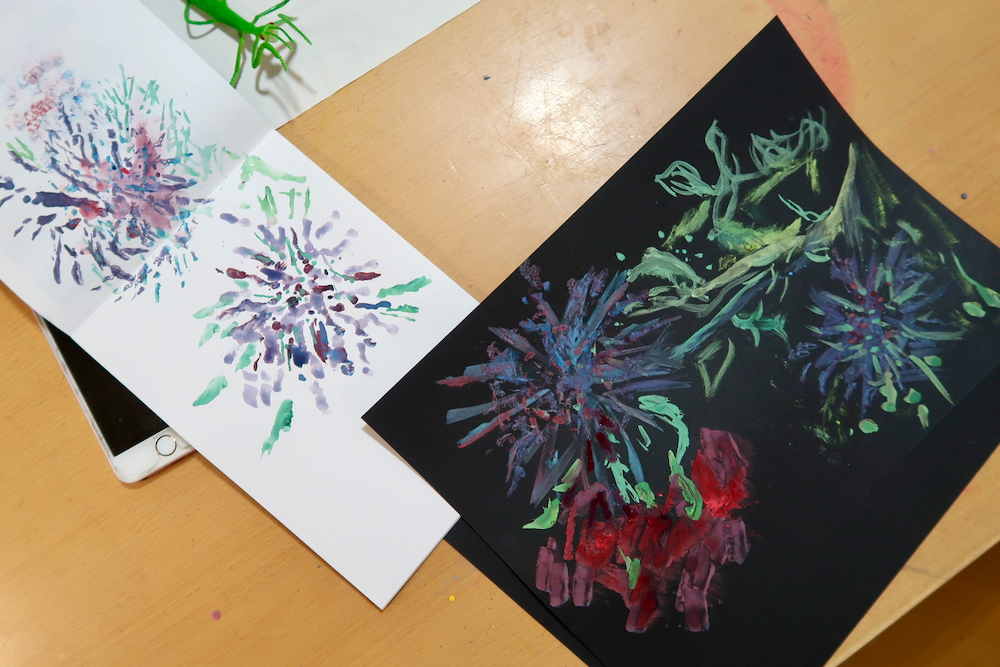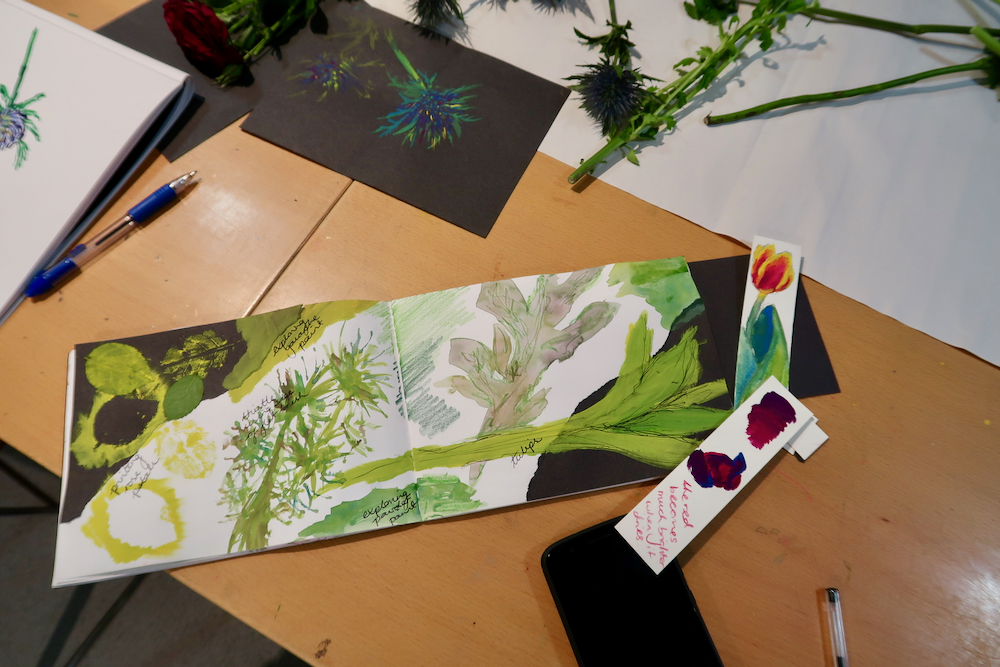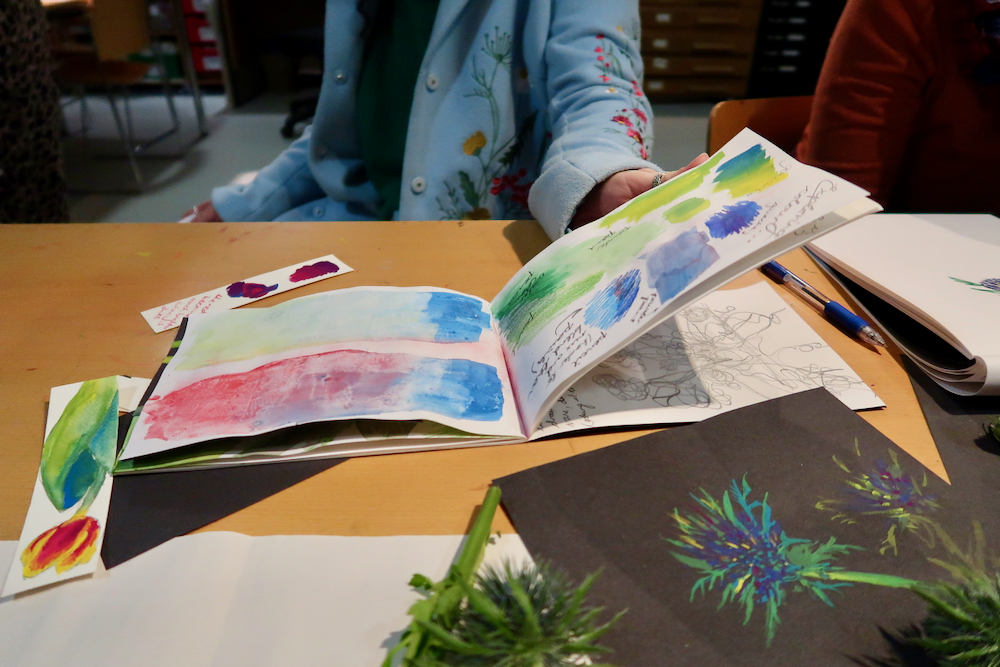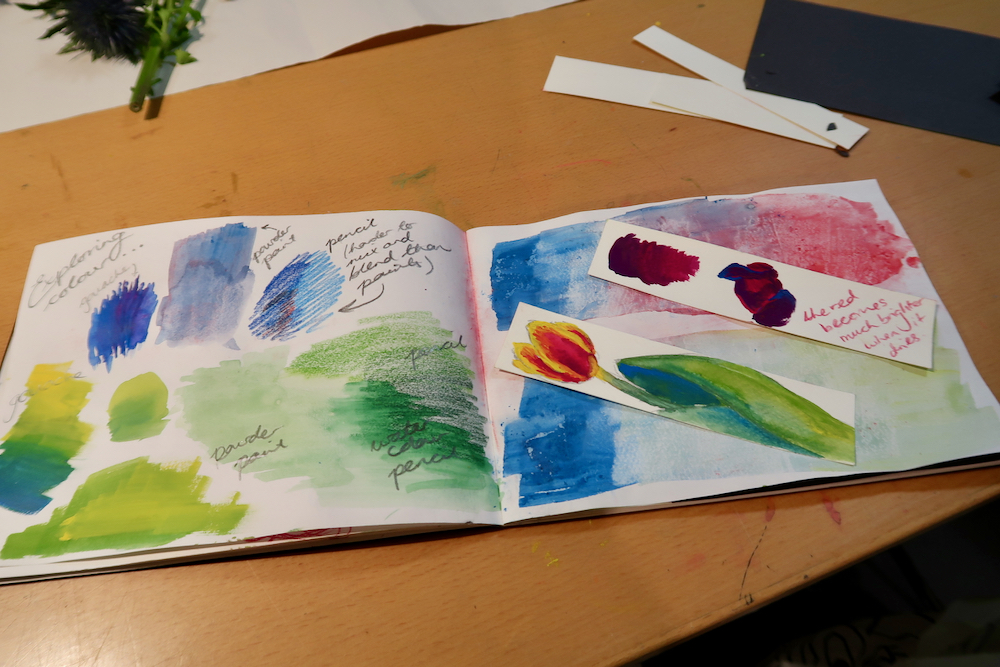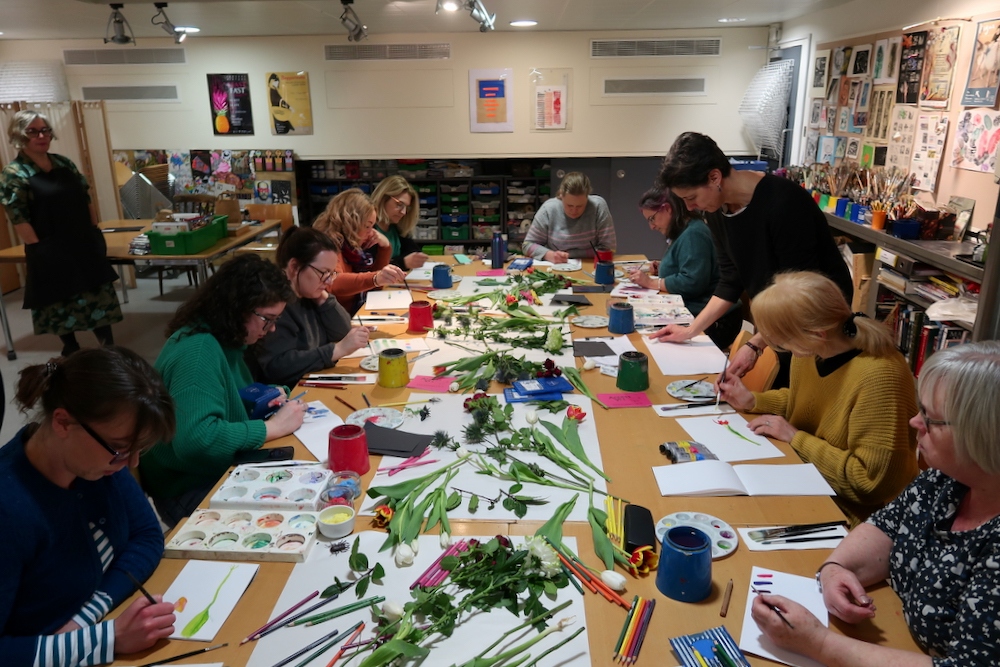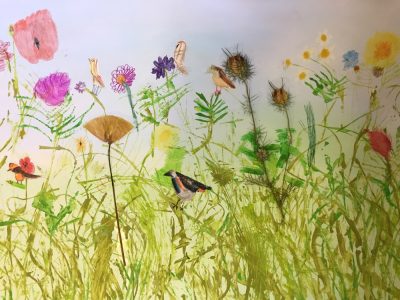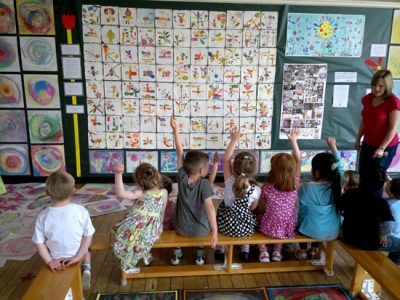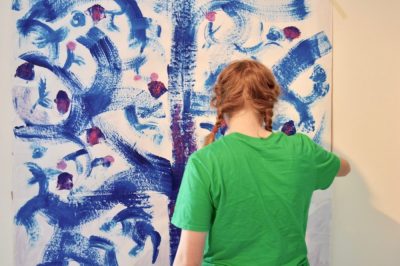Be Inspired by Flowers in a Glass Vase by Jan Davidsz de Heem
This resource looks at ‘Flowers in a Glass Vase’ by the Dutch painter, Jan Davidsz de Heem (1606-1684), on permanent display at the Fitzwilliam Museum, Cambridge, and how it might inspire your own creative responses and experimentation with colour.
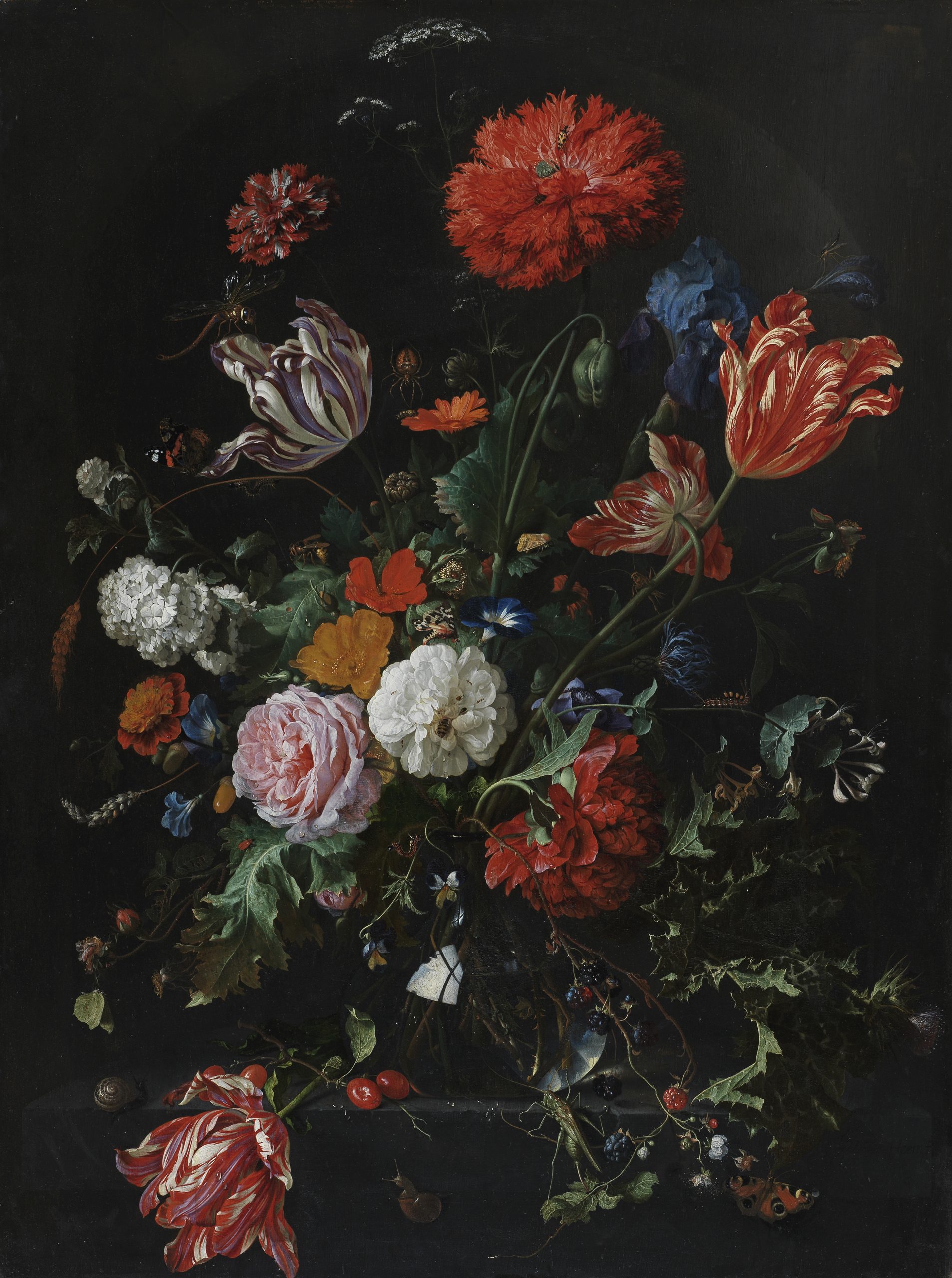
Setting the Scene
In February 2020, a group of primary school teachers explored the oil painting Flowers in a Glass Vase, by the Dutch painter Jan Davidsz de Heem, at the Fitzwilliam Museum, Cambridge with the museum’s education officer, Kate Noble, the museum’s Senior Research Scientist, Paola Ricciardi, and Sheila Ceccarelli from AccessArt.
We hope that the resource below will inspire open-ended, creative responses to the painting, from a distance. The ideas are suitable for exploration by all ages and abilities and on the kitchen table or anywhere.
Still Life
Flowers in a Glass Vase is a Dutch Still Life painting that was painted in the 1660s ‘when there was a growing interest in the natural world’*. You can read more about it here*.
Looking and Drawing Challenge
Exercise 1: Pointing and Looking
Look at the close-ups of Flowers in a Glass Vase below and choose one to work from.
With one eye squinted, point, with your index finger at a flower – you might feel silly, but this is a really good way to slow down your looking and concentrate on what you are seeing. Slowly move your index finger around the contours of the flower and, with your open eye, follow your index finger’s journey around the rest of the painting. What do you see?
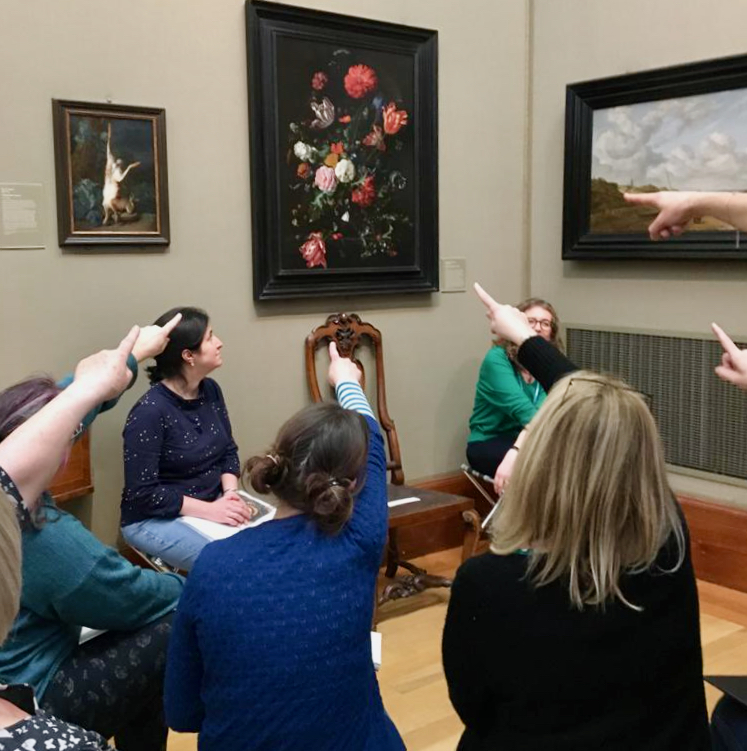
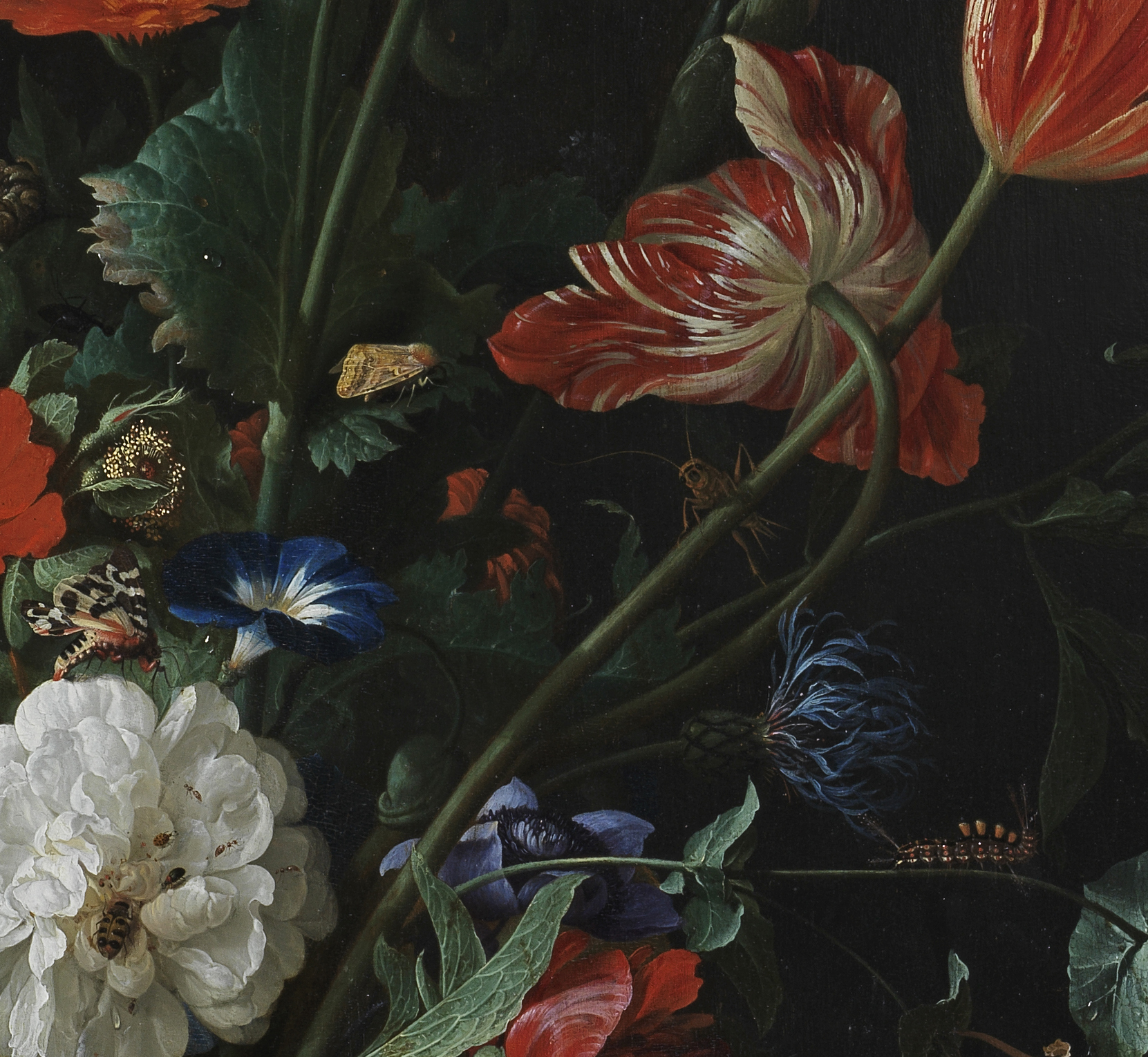
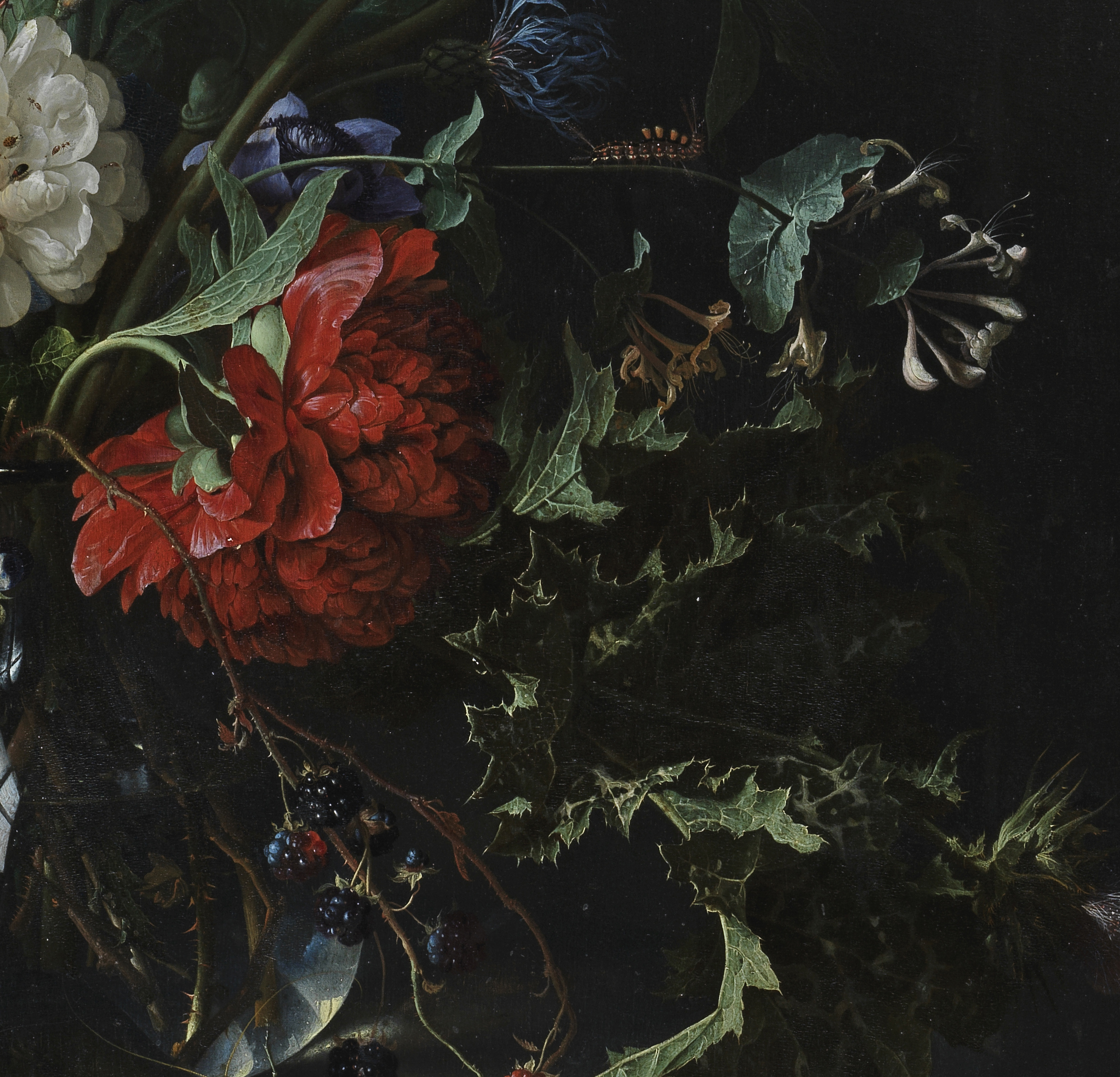
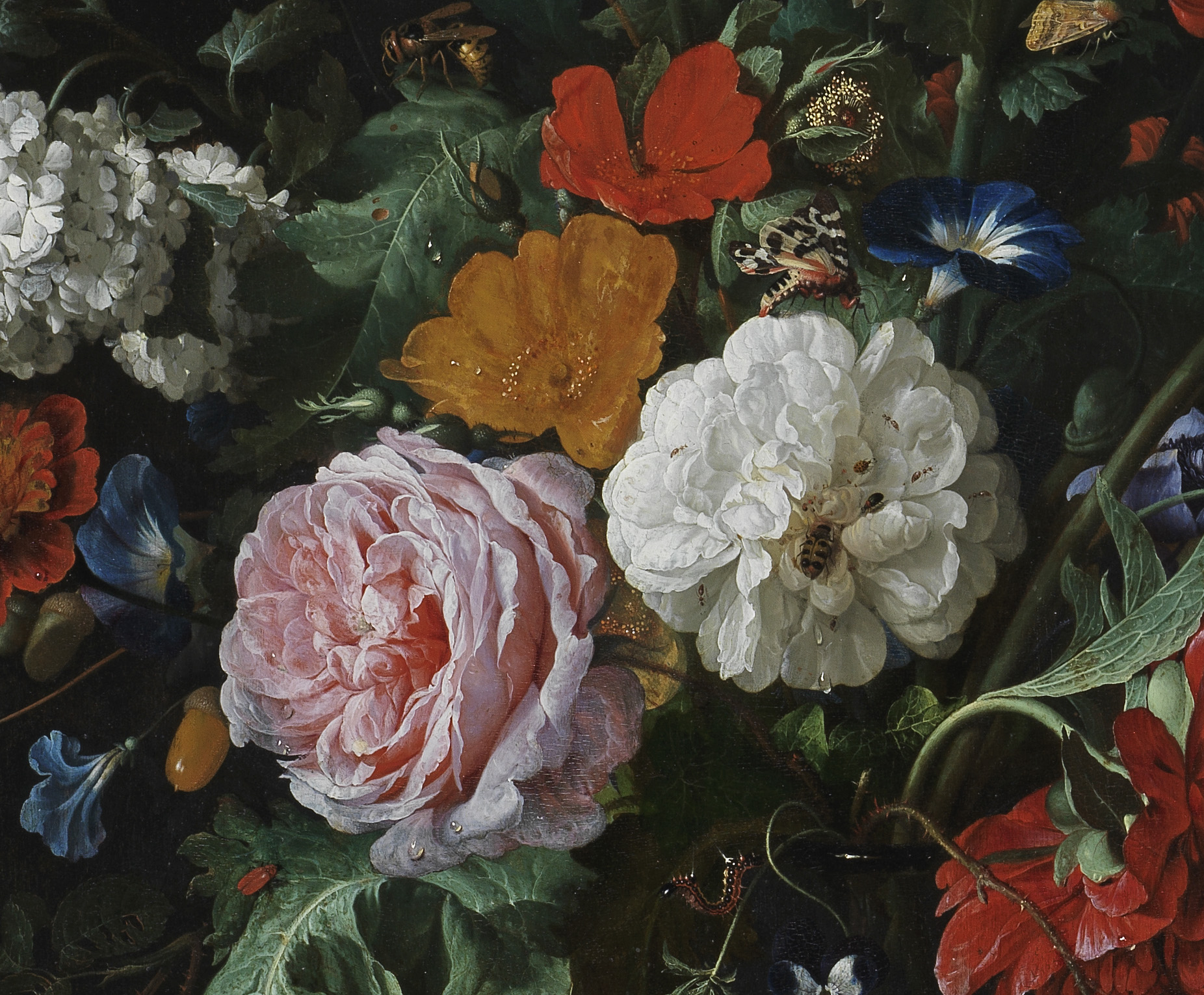
Exercise 2: Contour Drawing
On a piece of paper or sketchbook and with a pencil or drawing tool of your choice, continue your exploration around the painting. Try not looking at your drawing but continue your search for details in the painting. What do you see?
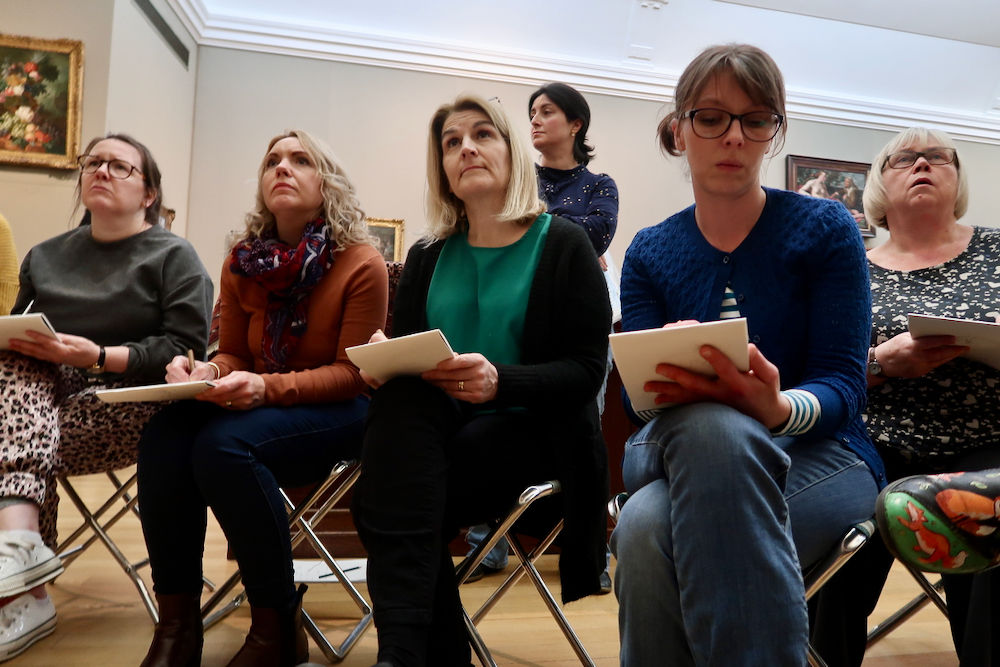
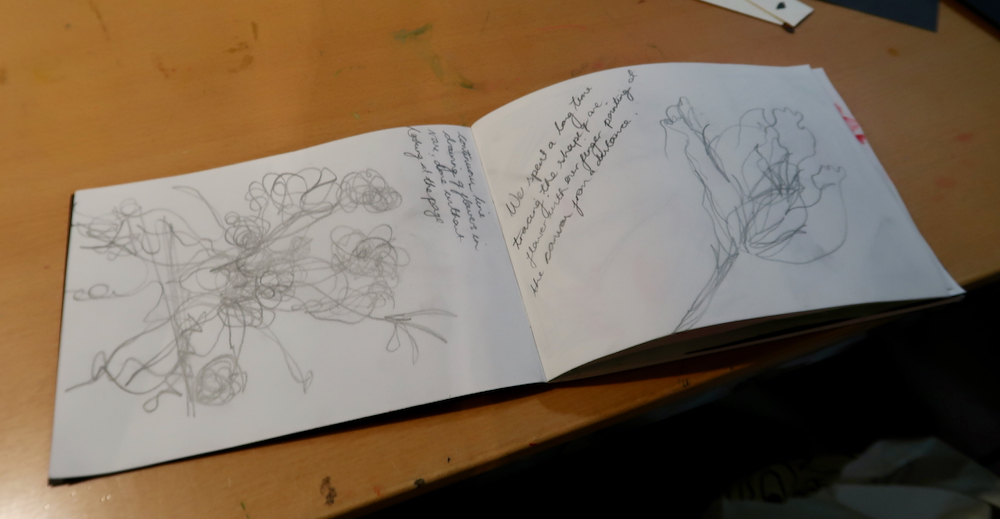
Exercise 3: Drawing the ‘Negative’ – or – Spaces ‘In-between’
After having explored and considered the contours of the flowers you will have discovered many details.
Now we are going to construct a drawing using a different approach. Instead of drawing around the flowers, we’re going to draw the shapes in-between them. This can be tricky but use the strong contrasts in the painting and the dark background to look at the shapes between the flowers and build your drawing by looking at, and drawing these spaces. What do you see?
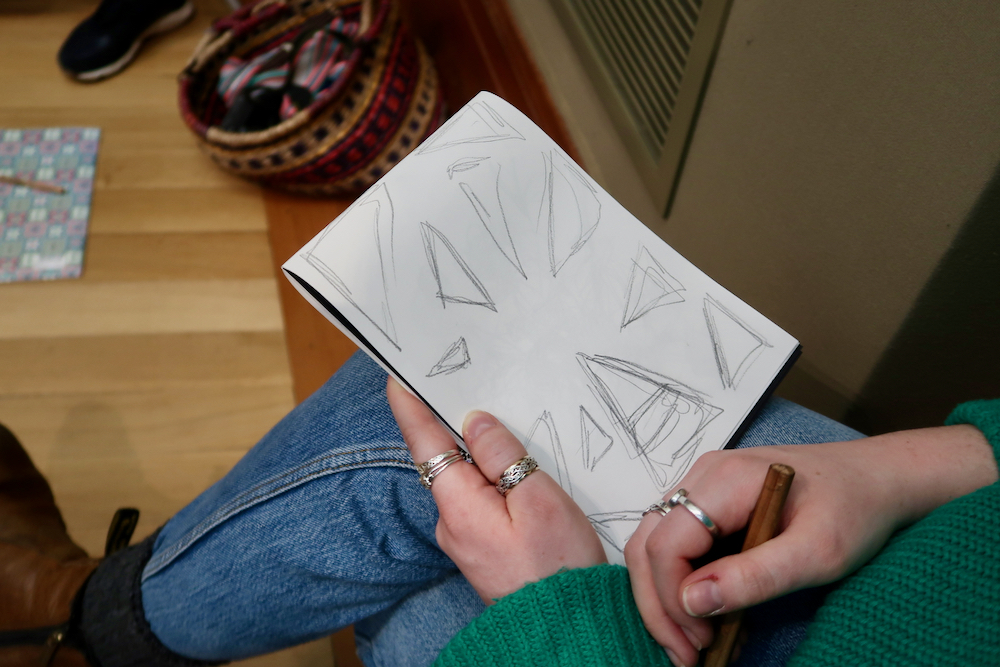
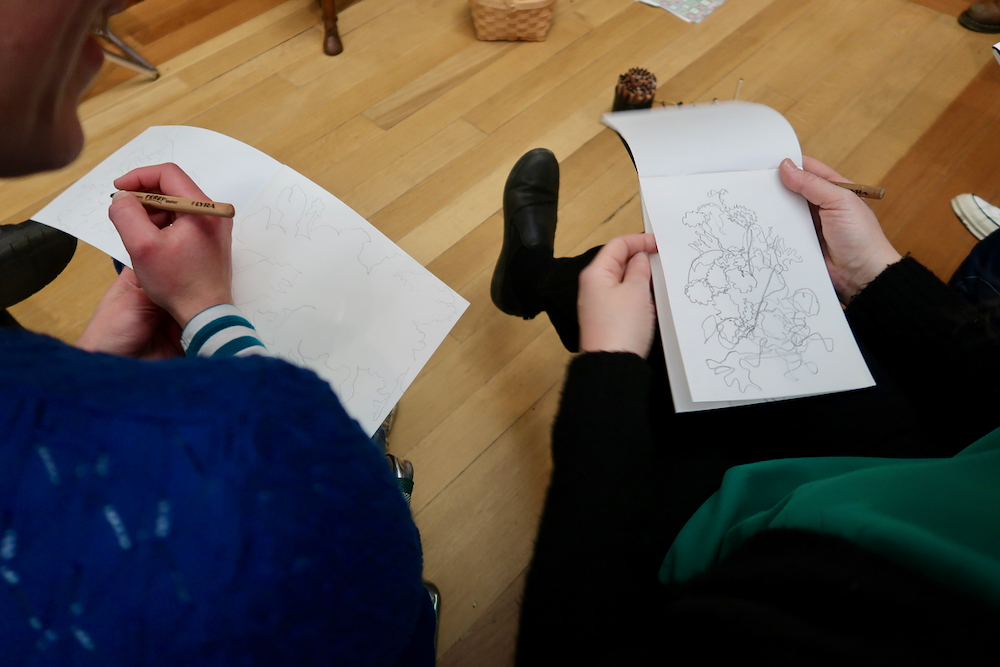
Painting Flowers
You Will Need:
- Flowers – Either cut flowers or flowers growing in the garden or your surrounding area;
- Primary Colours (Primary Yellow, Primary Red or Primary Blue) in:
- Powder paint, or
- Watercolour paint, or,
- Gouache paint, or,
- Acrylic paint, or,
- Watercolor pencils.
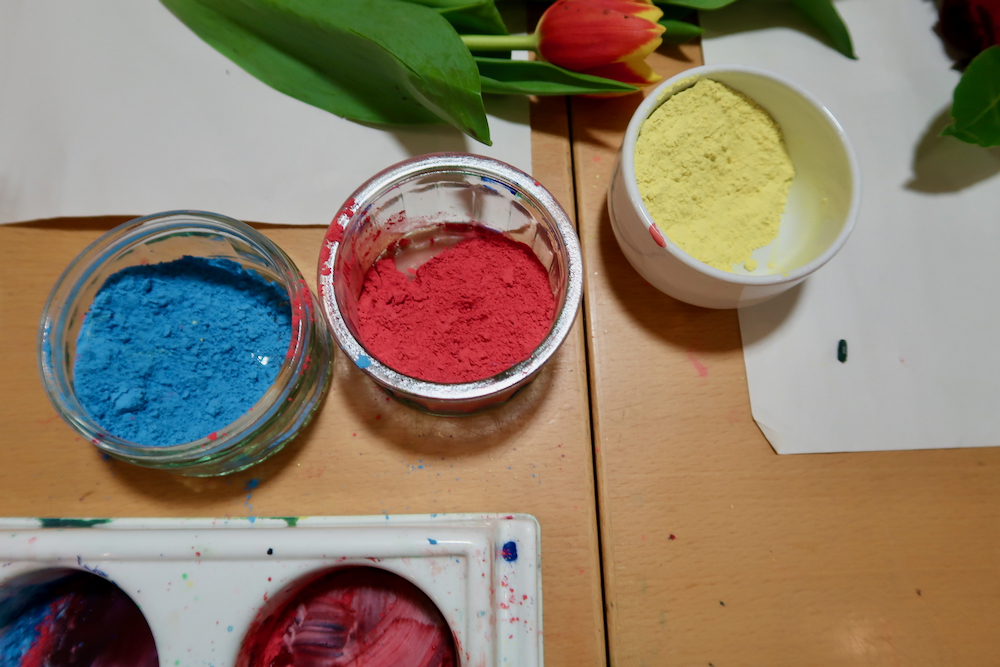
Exercise 1 – Colour Matching
Choose a flower and choose your painting medium.
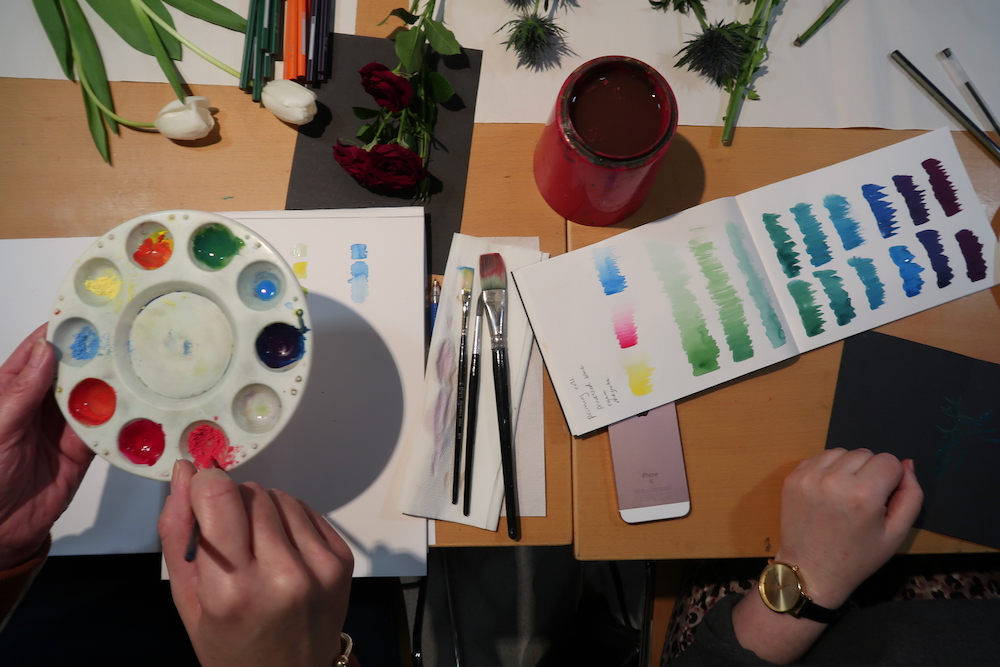
Exercise 2 – Colour and Form
As you start to gain confidence and pleasure in exploring colour, you might want to start to experiment with form. Remember your drawing exercises and how to look and see what’s in front of you and enjoy experimenting with mark making with liquid paint. If you want to add line, you might want to experiment with water-soluble graphite and watercolour pencils too. Enjoy!
Many thanks to the teachers who participated in this CPD training session for sharing their processes with AccessArt and The Fitzwilliam Museum, Cambridge.
Many thanks to the museum’s education officer, Kate Noble, the museum’s Senior Research Scientist, Paola Ricciardi. Many thanks to Lynda Clark, Image Library Manager at the museum, for providing AccessArt with images of Flowers in a Glass Vase. This post was written by Sheila Ceccarelli for AccessArt with photos by Sheila Ceccarelli and Rachel Thompson.
Supporting Resources
The Wildflower Meadow by Rachel Burch
The Wildflower Meadow
Minibeast Artwork by Tracy McGuinness-Kelly
The Minibeast Project
Painting a Bluebell Forest in Cyan, Magenta and Process Yellow on a Large Scale
Painting a Bluebell Forest in Cyan, Magenta and Process Yellow on a Large Scale
Look, Think, Do by The Fitzwilliam Museum Education Team
Vanessa the Lost Butterfly written and narrated by Nicola Wallis
UK Charity AccessArt created this resource in collaboration with the Fitzwilliam Museum, Cambridge.
AccessArt has over 850 resources to help develop and inspire your creative thinking, practice and teaching.
AccessArt welcomes artists, educators, teachers and parents both in the UK and overseas.
We believe everyone has the right to be creative and by working together and sharing ideas we can enable everyone to reach their creative potential.

